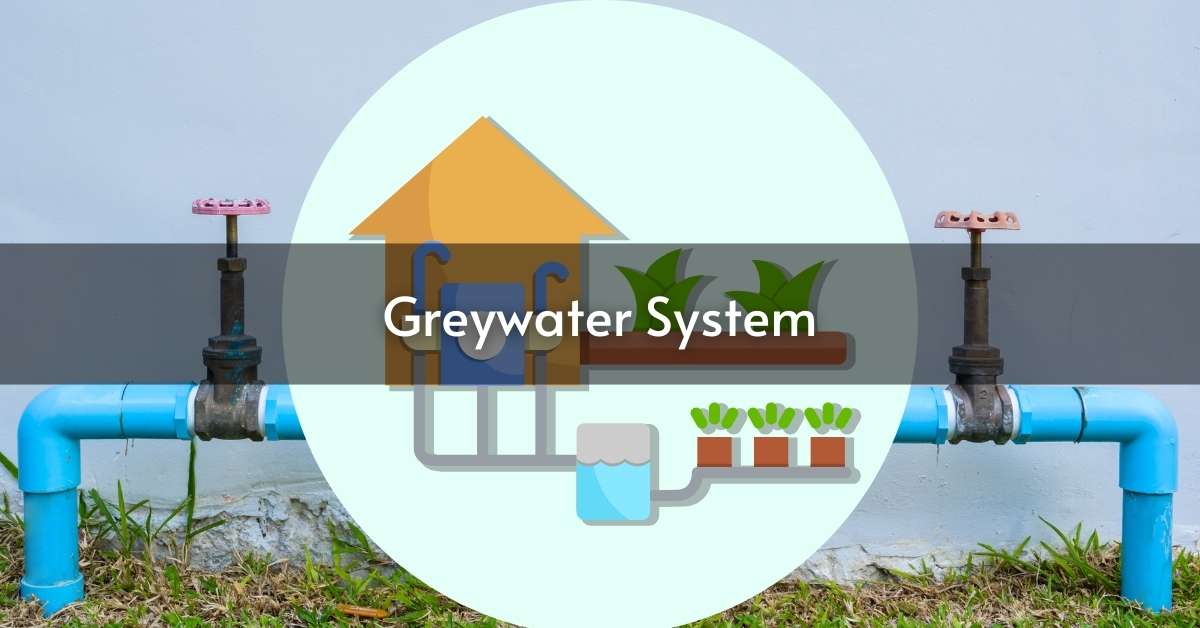Water is disappearing quickly, prompting organizations and governments worldwide to find ways to save it through recycling and reuse. A large part of water waste comes from homes, making it crucial to find solutions. Greywater systems are one of the effective methods of saving water. Greywater refers to water which is cleaner than the blackwater sewage. It can be reused in plant watering and for various other operations such as flushing toilets. This system allows saving water, hence lowering the force exerted on the sewage and the environment.
In this blog, we will explain what greywater systems are, their benefits, varieties, components, installation, maintenance, and potential problems that might be faced.
What is Greywater?
Greywater is the wastewater that comes from showers, sinks, and baths. Unlike sewer water, greywater is cleaner and can be easily recycled and reused. A greywater system treats this water, making it useful for things like flushing toilets and watering plants.
You might have heard of rainwater harvesting systems, which help people collect and store rainwater for home use. These systems also reduce the need for groundwater. Greywater systems have an advantage because they work faster and don’t rely on rain, allowing you to save water all year long.
How Does the System Work?
A greywater system treats water to keep people on the property healthy and safe. It must follow the rules of the Building Code. The treated water is often used for irrigation or flushing toilets.
A greywater system for irrigation usually has a surge tank and a way to send the water to the irrigation system. For systems that provide water for flushing toilets, a treatment system is needed.
Before treatment starts, water goes into the surge tank of the greywater recycling system. This tank holds the first amount of water that comes in. The surge tank needs to meet certain requirements. It must have proper ventilation, a trapped overflow, and be sealed to keep out pests. Water from the tank flows out using either gravity or a pump.
Benefits of Greywater System
- A greywater system helps conserve water because it reuses water from showers, sinks, and laundry, which means that less fresh water is used inside the home. Thus, a greywater system can be in support of sustainable living, especially when it comes to areas with scarce water availability or during drought seasons.
- Greywater recycling reduces the amount of wastewater being passed through the sewage system. This tends to ease pressure off treatment plants, reducing the cost the community pays and will mean less energy required to treat wastewater.
- A greywater system reduces the amount of household and commercial water usage. In return, this automatically gives way to reducing household and business-related water bills. The increasing prices of water in many localities mean huge savings over time.
- Greywater can be used to water gardens and lawns without being sourced from drinking water. This is especially helpful in dry areas or any area whose water usage is limited. It serves as a steady source of water for plants.
- A greywater system will reduce the need for large-scale water treatment processes. When households are reusing water, less energy is used in treating and moving water, which in turn saves overall energy.
Types of Greywater System
Greywater systems come in diverse forms, varying from how sophisticated they are, how costly they are, and the specific manner in which you would like to use them. There are three classifications:
Manual System
This is the most basic type. It involves collection by hand of greywater and utilization in gardening, among other things. For example, water from a washing machine can be collected in buckets and used in the garden. These systems are low cost but require regular manual effort.
Direct Diversion System
Also known as greywater diversion devices, these systems collect greywater from multiple sources in the house and discharge it directly into irrigation systems. They need very little filtration and are great for homes that use greywater mainly outside, such as for washing plants. These systems are usually cheap to install, often with low installation costs, but they limit how the water can be reused.
Treatment and Storage System
Advanced systems treat and filter greywater at the source before being stored. With this, you can recycle the same water in various applications, like flushing toilets or irrigating landscapes. Treatments can include filtration, sedimentation, or even disinfection according to the intended application. These systems are more costly to install and mandate more technical intervention; however, they provide more flexibility and are useful for applications with stricter controls over water use.
Key Components of a Greywater System
A greywater system typically consists of several key components, each designed to ensure the safe and efficient collection, treatment, and reuse of greywater. These components include:
| Sr. No | Component | Description |
| 1 | Collection Pipes | Water from showers, sinks, and washing machines goes into a collection pipe system. These pipes stay separate from the blackwater system to prevent contamination. Use strong materials like PVC for the collection pipes so they can handle the constant flow of water. |
| 2 | Filtration Unit | Filtration is important to remove larger particles and contaminants from greywater. This process can use a simple mesh filter or more advanced systems that include sedimentation tanks and biological filters. |
| 3 | Storage Tank | To use greywater for irrigation later, you need a storage tank. The tank must stop contamination and pathogen growth. It should also have an overflow system that sends extra greywater to the sewer or backup drainage system. |
| 4 | Distribution Network | After filtering and storing, we distribute greywater for reuse, usually for irrigation or flushing toilets. The system includes pumps, valves, and a control system to manage the water flow. |
| 5 | Disinfection Unit | If you reuse greywater for indoor uses like flushing toilets, you need a disinfection unit to get rid of harmful bacteria. Common methods include UV light, chlorine, and ozone treatments, with UV light being the most eco-friendly option. |
Installation of Greywater System
Greywater system installation varies with the type of system, the layout of the building, and local rules. Greywater systems that are less complex can be installed by do-it-yourself homeowners. Advanced systems usually need professional installation. Here’s how to install a greywater system:
Assessment and Design
Proceed with the analysis of greywater coming from a building and what one can do with the produce. A designer or an engineer can design based on the size of the house, water restrictions, and the landscape.
Plumbing Alterations
Greywater systems require alterations in plumbing to collect greywater separately from blackwater. This includes extra pipes collecting greywater and redirecting it into the treatment and storage units.
Installation Unit Treatment
Add filtration, treatment, or disinfection units to the system, place them in appropriate location, preferably near the collection point or tank. There may be the need for pumps in such large systems when transferring the water through the system.
Connection to Irrigation Network, Toilet, etc.
In the last step, connect the greywater system to the irrigation network, toilet, etc. Seal the entire greywater system tightly to prevent any leaks or contamination with other drainage.
Greywater System Maintenance
Maintenance is also necessary for a greywater system so that it may keep working well and even longer. Regular inspections and cleaning prevent clogs, remove the sludge from filters and ensure effective working of the disinfection unit. Some very important tasks include:
- Filter checking and cleaning may often be required to remove the debris.
- The flushing process regularly helps prevent stuff from building up inside the pipes and the storage tanks.
- Checking of pumps and valves to guarantee proper performance.
- Monitoring the gray water to ensure it is always safe for reuse, especially in indoor applications.
Issues and Considerations
As much as greywater systems are beneficial, they also have their challenges. People contemplating a greywater installation should know this consideration:
Health and Safety
Greywater is less contaminated than blackwater but holds plenty of pathogens and chemicals that are dangerous if not treated precisely. You should never use it for drinking, bathing, or cooking. You need to filter and disinfect it properly to lower health risks.
Meeting Local Standards
There are all types of regulations regarding the use of greywater, and these can vary by locality. For example, some place strict requirements on greywater systems, while others offer incentives and rebates.
Costs and Savings
Greywater system installation will, in the long term, save money, but its setting up is expensive and will be costly for installing and treating professionally. The homeowners must determine whether the saved water is worth the cost.
Maintenance of the System
More complex greywater systems require frequent maintenance and monitoring. The homeowners are expected to spend time and effort to keep the system running well.
Conclusion
Greywater systems offer an effective and eco-friendly solution to save water, cut costs, and reduce the environmental impact of homes and businesses. They reuse water from showers, sinks, and laundry for things like irrigation or flushing toilets, which can greatly lower water use and reduce strain on city sewage systems. However, it’s important to think about factors such as system complexity, local rules, and maintenance needs before setting one up. With good planning and care, greywater systems can play a key role in managing water sustainably as water scarcity becomes more common.
FAQs
What is a greywater system?
A greywater system is a system in which water from showers, baths, and sinks are used for watering plants and for recharging groundwater.
Is a greywater system worth it?
Homeowners can save up to 40,000 gallons of water per year. Thus, their bills are reduced considerably.
What are the disadvantages of greywater?
Greywater contains harmful bacteria. It is also not fit for drinking. Hence, in certain ways, it may badly affect plants. Bacteria are spread if misused.
What is the purpose of greywater?
Treated greywater can reduce the risk of health problems in people and can water gardens, flush toilets, or do laundry, but treatment systems may be expensive.
Read More – Sump Pump: How They Work and Why You Need One













